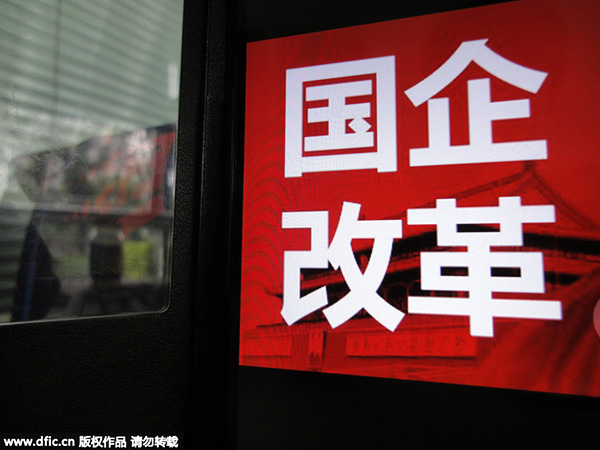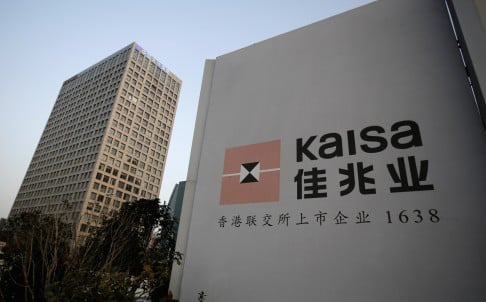

Intralinks: The meltdown of China’s equity markets that began in the summer, despite measures by officials in Beijing aimed at calming investors’ nerves, has left many global investors jittery. Is this just a correction of an overheated market or the start of something more serious, and how would you describe the mood in China at the moment?
Peter Fuhrman: Never once have I heard of a stock market correction that was greeted with glee by the mass of investors, brokers, regulators or government officials. So too most recently in China. The dive in Chinese domestic share prices, while both overdue and in line with the sour fundamentals of most domestically quoted companies, has caused much unhappiness at home and anxiety abroad. The dour outlook persists, as more evidence surfaces that China’s real economy is indeed in some trouble. I first came to China 34 years ago, and have lived full-time here for the last six years. This is unquestionably the worst economic and financial environment I’ve encountered in China. Unlike in 2008, the Chinese government can’t and won’t light a fiscal bonfire to keep the economy percolating. The enormous state-owned sector is overall on life support, barely eking out enough cash flow to pay interest on its massive debts. Salvation this time around, if it’s to be found, will come from the country’s effervescent private sector. It’s already the source of most job creation and non-pump-primed growth in China. The energy, resourcefulness, pluck and risk-tolerance of China’s entrepreneurs knows no equal anywhere in the world. The private sector has been fully legal in China for less than two decades. It is only beginning to work its economic magic.
Intralinks: Much has been made of slowing economic growth in China. What are you seeing on the ground and how reliable do you view the Chinese official growth statistics?
Â
Peter Fuhrman: If there’s a less productive pastime than quibbling with China’s official statistics, I don’t know of it. Look, it’s beyond peradventure, beyond guesstimation that China’s economic transformation is without parallel in human history. The transformation of this country over the 34 years since I first set foot here as a graduate student is so rapid, so total, so overwhelmingly positive that it defies numerical capture. That said, we’re at a unique juncture in China. There are more signs of economic worry down at the grassroots consumer level than I can recall ever seeing. China is in an unfamiliar state where nothing whatsoever is booming. Real estate prices? Flat or dropping. Manufacturing? Skidding. Exports? Crawling along. Stock market prices? Hammered down and staying down. The Renminbi? No longer a one-way bet.
Â
Intralinks: What impact do you see a slowing Chinese economy having on other economies in the APAC region and elsewhere?
Â
Peter Fuhrman: Of course there will be an impact, both regionally and globally. There’s only one certain cure for any country feeling ill effects from slowing exports to China: allow the Chinese to travel visa-free to your country. The one trade flow that is now robust and without doubt will become even more so is the Chinese flocking abroad to travel and spend. Only partly in jest do I suggest that the U.S. trade deficit with China, now running at a record high of about $1.5 billion a day, could be eliminated simply by letting the Chinese travel to the U.S. with the same ease as Taiwanese and Hong Kong residents. Manhattan store shelves would be swept clean.
Â
Intralinks: With prolonged record low interest rates and low inflation in most of the advanced economies, many multinational companies have looked to China as a source of growth, including through M&A. Which sectors in China have tended to attract the majority of foreign interest? Do you see that continuing or will the focus and opportunities shift elsewhere? Is China a friendly environment for inbound M&A?
Â
Peter Fuhrman: The challenges, risks and headaches remain, of course, but M&A fruit has never been riper in China. This is especially so for U.S. and European companies looking to seize a larger slice of China’s domestic consumer market. The M&A strategy that does work in China is to acquire a thriving Chinese private sector business with revenues in China of at least $25m a year, with its own-brand products, distribution, and a degree of market acceptance. The goal for a foreign acquirer is to use M&A to build out most efficiently a sales, brand and product strategy that is optimized for China, in both today’s market conditions, as well as those likely to pertain in the medium- to long-term.
The botched deals tend to get all the headlines, but almost surreptitiously, some larger Fortune 500 companies have made some stellar acquisitions in China. Among them are Nestle, General Mills, ITW, FedEx and Valspar. They bought solid, successful, entrepreneur-founded and run companies. Those acquired companies are now larger, often by orders of magnitude. The acquirer has also dramatically expanded sales of its own global products in China by utilizing the localized distribution channels it acquired. In Nestle’s case, China is now its second-largest market in revenue-terms after the U.S. Four years ago, it ranked number seven.
Chinese government policy towards M&A is broadly positive to neutral. More consequential but perhaps less well-understood are the negative IPO environment for domestic private sector companies, as well as the enormous overhang of un-exited PE invested deals in China. These have transferred pricing leverage from sellers to buyers in China. Increasingly, the most sought-after exit route for domestic Chinese entrepreneurs is through a trade sale to a large global corporation.
Intralinks: After years of being seen mainly as “an interested partyâ€, rather than an actual dealmaker, Chinese players are increasingly frequently the successful bidder in international M&A transactions. What has changed in their approach to dealmaking to ensure such success?
Â
Peter Fuhrman: Yes, Chinese buyers are increasingly more willing and able to close international M&A deals. But, the commonly-heard refrain that Chinese buyers will devour everything laid in front of them stands miles apart from reality. It seems like every asset for sale in every locale is seeking a Chinese buyer. The limiting factor isn’t money. Chinese acquirers’ cost of capital is lower than anywhere else, often fractionally above zero. The issue instead is too few Chinese companies have the managerial depth and experience to close global M&A deals. There are some world-class exceptions and world-class Chinese buyers. In the last year, for example, a Chinese PE fund called Hua Capital has led two milestone transactions, the proposed acquisition for a total consideration north of $2.5bn, of two U.S.-quoted semiconductor companies, Omnivision and ISSI. Hua Capital has powerful backers in China’s government, as well as outstanding senior executives. These guys are the real deal.
Â
Intralinks: When it comes to doing deals, what are the differences between private/public companies and SOEs?
Â
Peter Fuhrman: With rare exceptions, the SOE sector is now paralyzed. No M&A deals can be closed. Every week brings new reports of the arrest of senior SOE management for corruption. In some cases, the charges relate directly to M&A malfeasance, bribes, kickbacks and the like. SOE M&A teams will still go on international tire-kicking junkets, but getting any kind of transaction approved by the higher tiers within the SOE itself and by the government control apparatus is all but impossible for now. That leaves China’s private sector companies, especially quoted ones, as the most likely club of buyers. We work with the chairmen of quite a few of these private companies. The appetite is there, the dexterity often less so.
Â
Intralinks: China has long been a fertile dealmaking environment for PE funds – both home-grown and international. In what ways does the Chinese PE model differ from what we see in other markets?
Â
Peter Fuhrman: Perhaps too fertile. For all the thousands of deals done, Chinese PE’s great Achilles heel is an anemic rate of return to their limited partner investors, especially when measured by actual cash distributions. Over the last three, five, seven years, Chinese PE as a whole has underperformed U.S. PE by a gaping margin. It’s a fundamental truth too often overlooked. High GDP growth rates do not correlate, and never have, with high investment returns, especially from alternative investment classes like PE. If there is one striking disparity between PE as practiced in China as compared to the U.S. and Europe, it’s the fact that that Chinese general partners, whether they’re from the world’s largest global PE firms or pan-Asian or China-focused funds, too often think and act more like asset managers than investors. The 2 takes precedence over the 20.
Intralinks: What opportunities and challenges are private equity investors facing?
Peter Fuhrman: The levels of PE and venture capital (VC) investing activity in China have dropped sharply. What money is being invested is mainly chasing after a bunch of loss-making online shopping and mobile services apps. The hope here is one will emerge as China’s next Alibaba or Tencent, the two giants astride China’s private sector. PE investment in China’s “real economy,†that is manufacturing businesses that create most of the jobs and wealth in China, has all but dried up. Though out of favor, this is where the best deals are likely to be found now. Contrarianism is an investing worldview not often encountered at China-focused PE and VC firms.
Â
Intralinks: As in many other markets, PE investors are having to deal with a backlog of portfolio companies ready to be exited. Do you feel that PE’s focus on minority investments in China could prove a challenge when it comes to exiting those investments? What do you see as the primary exit route?
Peter Fuhrman: Exits remain both few in number and overwhelmingly concentrated on a single pathway, that of IPO. M&A exits, the main source of profit for U.S. and European PE firms, remain exceedingly rare in China. In part, it’s because PE firms usually hold a minority stake in their Chinese investments. In part, though, the desire for an IPO exit is baked into the PE investment process in China. Price/Earnings (P/E) multiple arbitrage, trying to capture alpha through the observed delta in valuation multiples between private and public markets, remains a much-beloved tactic.
Intralinks: Finally, what is your overall outlook on China and advice for foreign companies and investors seeking opportunities to engage in M&A or invest there?
Peter Fuhrman: Yes, China’s economy is slowing. But the salient discussion point within boardrooms should be that even at 5% growth, China’s economy this year is getting richer faster in dollar terms than it did in 2007 when GDP growth was 14%. That’s because the economy is now so much larger. This added increment of wealth and purchasing power in China in 2015 is larger than the entire economies of Taiwan, Malaysia, Thailand, and Hong Kong. Much of the annual gain in China, likely to remain impressively large for many long years to come, filters down into increased middle class spending power. This is why China must matter to global businesses with a product or service to sell. M&A in China has a cadence and quirks all its own. But, the business case can often be compelling. The terrain can be mastered.
Download interview
Download complete report
–






















